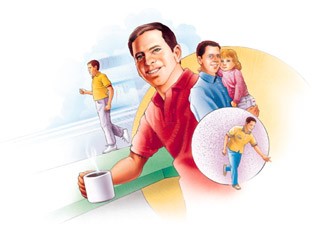Low Back Surgery
These articles are for general information only and are not medical advice. Full Disclaimer. All articles are compliments of the AAOS
Low back problems may make it difficult for you to perform daily activities and may affect your ability to move freely. You may even feel pain while resting or lying down.
Medication, changes in daily activity and exercise may all play a role in improving your mobility and relieving your pain. Most low back pain problems, such as that caused by improper lifting, will disappear in a few days or weeks with care that doesn’t require surgery.
Other pain, caused by the wear-and-tear of daily living that affects the vertebrae and disks in your back, may require surgery. You and your orthopedic surgeon will discuss what is the best treatment for you.
This booklet will help you understand how your spine works, the causes of some back and leg pain and the benefits and limitations of surgery to relieve pressure on nerves in your spine and/or to stabilize your spine. You’ll learn what is involved in making the decision for surgery, what to expect during and after surgery and how to avoid complications after surgery.
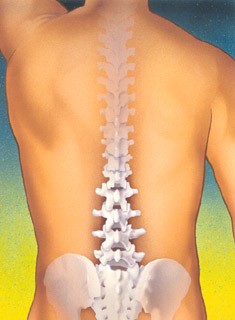
How the Normal Spine Works
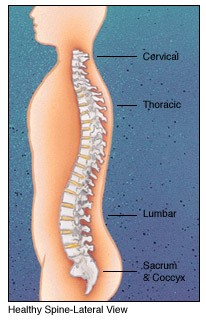
Normal body movement, walking, standing, sitting, twisting and bending, is possible because of the unique structure of the spinal column.
There are 24 vertebrae in three upper segments of the spinal column. These three segments create three natural curves of the back: the curves of the neck area (cervical), chest area (thoracic) and lower back (lumbar). The lower segments of the spine (sacrum and coccyx) are made up of a series of vertebrae that are fused together.
Between the vertebrae are disks, which are cushioning pads that absorb pressure and allow spine movement.
The spinal column is held in alignment or balance by ligaments, cartilage, and muscles that surround and protect the spinal cord membranes and the nerves that branch out to your legs, arms, and all parts of your body.
Displacement (herniation) of the disk can lead to low back pain as well as pain and numbness in the legs (sciatic pain) and weakness of the muscles in one or both legs.
When the vertebrae are aligned, a canal is formed by the vertebral arch (lamina) that contains the spinal cord. Nerves pass through openings (foramina) of the adjoining vertebrae and into your arms and legs.
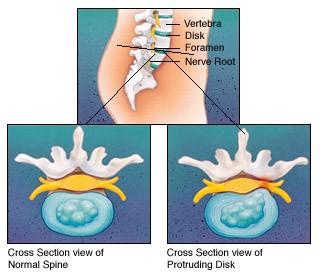
The muscles and ligaments attached to the vertebrae need to be kept in good condition to enable the spine to withstand the stresses of daily activity. A well-balanced, flexible spine is less likely to develop low back pain and is less likely to require medical treatment.
Common Causes of Low Back Pain
As a result of wear and tear on the spine, ligaments and disks, the disk may begin to protrude or collapse and put pressure on the nerve root leading to a leg or foot, causing pain in those areas (sciatica).
The problem can be aggravated by associated conditions, such as narrowing (stenosis) of the canal or shifting of the vertebra (spondylolisthesis), one upon the other.
You also may have low back pain from improper lifting of an object, a fall or sudden twisting. Most back pain from these causes is due to overuse of muscles and disappears in a few weeks.
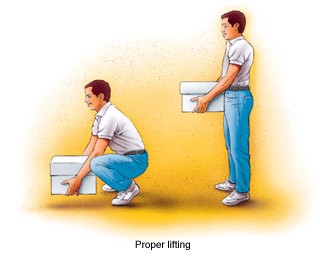
Is Low Back Surgery for You?
If you have persistent back pain or pain in your thigh, buttock or leg; numbness or tingling in your leg; and/or weakness in your leg, and it doesn’t respond to conservative, nonoperative treatment, your family doctor can refer you to an orthopedic surgeon for an evaluation.
You and your orthopedic surgeon will determine whether you would benefit from low back surgery which relieves pressure on the nerves in the spinal cord and/or stabilizes the spine.
The Orthopedic Evaluation
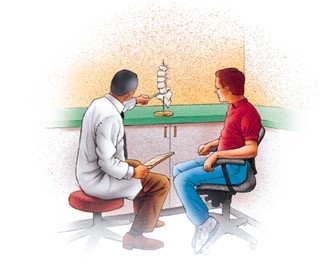
The orthopedic evaluation consists of four components:
- A medical history, in which your orthopedic surgeon gathers information about your general health and asks about your symptoms.
- A physical examination to assess the stability, strength, alignment and motion of your back, as well as a neurological evaluation.
- Diagnostic tests such as X-rays, which may be obtained to evaluate the bones and structure of your spine. An MRI (Magnetic Resonance Imaging) may be arranged to provide more detailed information about the spine. MRIs are not X-rays and use no radiation to create images. A myelogram also may be requested. (A myelogram uses X-ray imaging and an injected dye to define bony and soft tissue structures affecting the nerve root.) Other imaging studies such as a CAT scan also may be ordered which provides details about the bones and soft tissues not seen on regular X-rays.
- Discussion by you and your orthopedic surgeon of the findings of the physical and diagnostic examination and the treatment for your condition. Initially, medication and physical therapy may be prescribed to reduce inflammation at the site of the pain and to strengthen the muscles supporting the spinal column. If you are overweight, a weight reduction program may be suggested. In addition, you will be encouraged to begin a regular aerobic exercise program once your problem has been corrected.
Preparing for Surgery
You may be asked to stop taking certain medicine or to stop smoking. Depending on your age and general medical fitness, you may be asked to undergo a general medical checkup by your family doctor.
Medication Some medicines may interfere with or affect the results of your surgery. They may cause bleeding or may interfere with the effects of your anesthesia. These medications include aspirin and nonsteroidal anti-inflammatory drugs. Your doctor may ask you to stop taking the medication before your surgery.
Donating Blood Donating blood usually is not necessary for most low back surgery that does not include fusing vertebrae together. However, there is always a chance that some blood loss will occur during surgery. Your doctor will discuss the advantages and disadvantages of donating your own blood compared with using someone else’s blood. If you decide to donate your own blood, your doctor may prescribe an iron supplement to help build up your blood before surgery.
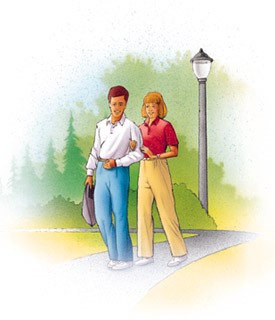
Your Surgery
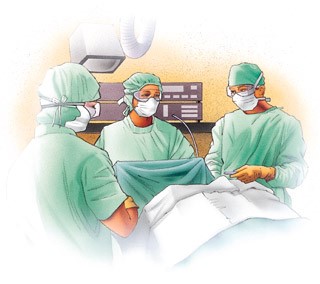
Patients usually are admitted to the hospital on the day of surgery. After admission, you will be taken to the preoperative preparation area where you will be interviewed by a doctor from the anesthesia department, who will review your medical history and physical examination reports. You and your doctor will discuss the type of anesthesia to be used. (Sometimes this is done during an outpatient visit up to seven days before your surgery.) The most common types of anesthesia used for low back surgery are general (you are asleep for the entire operation) or spinal (you may be awake but have no feeling from your waist down).
Possible Complications After Surgery
The surgical procedure usually takes one to three hours, depending on your problem. Your orthopedic surgeon will remove a portion of bone and ligament overlying the nerve roots and will remove displaced disk material to relieve pressure on the nerve roots. Fusion is sometimes done at the same time if an instability (spondylolisthesis) is present.
When your surgery is completed, you will be moved to the recovery room, where you will be observed and monitored by a nurse until you awake from your anesthesia. You will have an intravenous (IV) line inserted into a vein in your arm. You also may have a catheter inserted into your bladder to make urination easier.
When you are fully awake and alert, you will be taken to your hospital room. Your IV and catheter will be removed soon after.
Your Hospital Stay
You will feel some pain at the site of your surgery. Your doctor will prescribe pain medicines to help reduce this discomfort. You will be encouraged to breathe deeply and to cough frequently to avoid fluid build-up in your lungs. You may be given a small machine called an incentive spirometer (blow bottle) to help you.
You will be encouraged to begin walking on the same evening after your surgery or the next day to help speed your recovery. If your doctor orders a brace or support, you and your family members will be taught how to put it on and take it off.
Physical Therapy
A physical therapist may instruct you on how to walk up and down stairs without assistance, how to sit properly, and how to maintain good spinal balance. You also should exercise your legs in bed to help prevent blood clots. A follow-up program of physical therapy may be prescribed, depending on the situation.
The incidence of complications after low back surgery is low. Major complications that can occur include, but are not limited to, infection, heart attack, stroke, blood clots and recurrent disk herniations. Although rare, new nerve damage can occur as a result of this surgery. These complications may result in pain and prolonged recovery time.
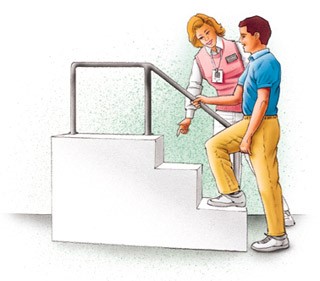
Your Recovery at Home
After your discharge from the hospital, you will need to follow your doctor’s orders exactly to ensure a successful recovery. You should arrange for transportation home that will allow you to ride in a leaning back or lying down position. You may do as much for yourself as you can as long as you maintain a balanced position of your spine. You shouldn’t stay in bed during the day. Don’t hesitate to ask for help from your family members or friends if it is needed. If necessary, arrangements can be made for a home health aide.
Wound Care
Your wound may be closed with stitches (sutures) or staples, which will be removed approximately two weeks after surgery. If the wound is clean and dry, no bandage is needed. If drainage continues after you are home, the wound should be covered with a bandage and a call made to your surgeon.
Diet
Some loss of appetite is common. Eating well-balanced meals and drinking plenty of fluids is important. Your doctor may recommend iron supplement pills or vitamins before and after your surgery.
Activity
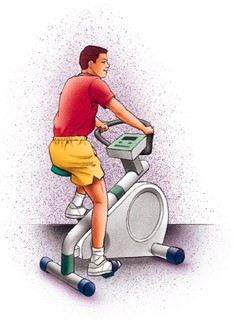
Loss of energy is frequently experienced after major surgery, but this improves over time. An exercise program designed to gradually increase your strength and stamina may be prescribed. Initially, your doctor will recommend that you should only participate in walking. Later, he or she will encourage you to swim or use an exercise bike or treadmill to improve your general physical condition.
Avoiding Problems After Surgery
It is important that you carefully follow any instructions from your doctor relating to warning signs of blood clots and infection. These complications are most likely to occur during the first few weeks after surgery.
Warning signs of possible blood clots include the following:
- Swelling in the calf, ankle or foot
- Tenderness or redness, which may extend above or below the knee
- Pain in the calf
Occasionally, a blood clot will travel through the bloodstream and may settle in your lungs. If this happens, you may experience sudden chest pain and shortness of breath or cough. If you experience any of these symptoms, you should notify your doctor immediately. If you cannot reach your doctor, someone should take you to the hospital emergency room or call 911.
Infection following spine surgery occurs very rarely. Warning signs of infection include:
- Redness, tenderne,ss and swelling around the wound edges
- Drainage from the wound
- Pain or tenderness
- Shaking chills
- Elevated temperature, usually above 100 degrees if taken with an oral thermometer
If any of these symptoms develop, you should contact your doctor or go to the nearest emergency room immediately.
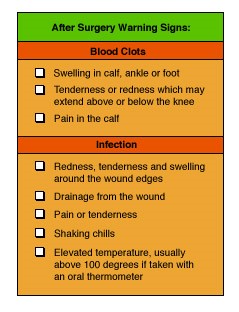
After Recovery
After you have recovered from your low back surgery, you may continue to have some achy pain in your lower back; this may be persistent. You can reduce the pain by staying in good physical condition. If you are overweight, you should enroll in a program to help you lose weight and keep it off.
Your doctor will evaluate you after your surgery to make sure that your recovery is progressing as expected.
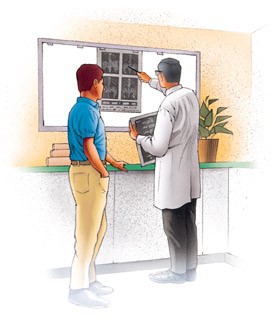
Your orthopedic surgeon is a medical doctor with extensive training in the diagnosis and nonsurgical and surgical treatment of the musculoskeletal system, including bones, joints, ligaments, tendons, muscles, and nerves.
This brochure has been prepared by the American Academy of Orthopedic Surgeons and is intended to contain current information on the subject from recognized authorities. However, it does not represent the official policy of the Academy and its text should not be construed as excluding other acceptable viewpoints. Persons with questions about a medical condition should consult a physician who is informed about the condition and the various modes of treatment available.
